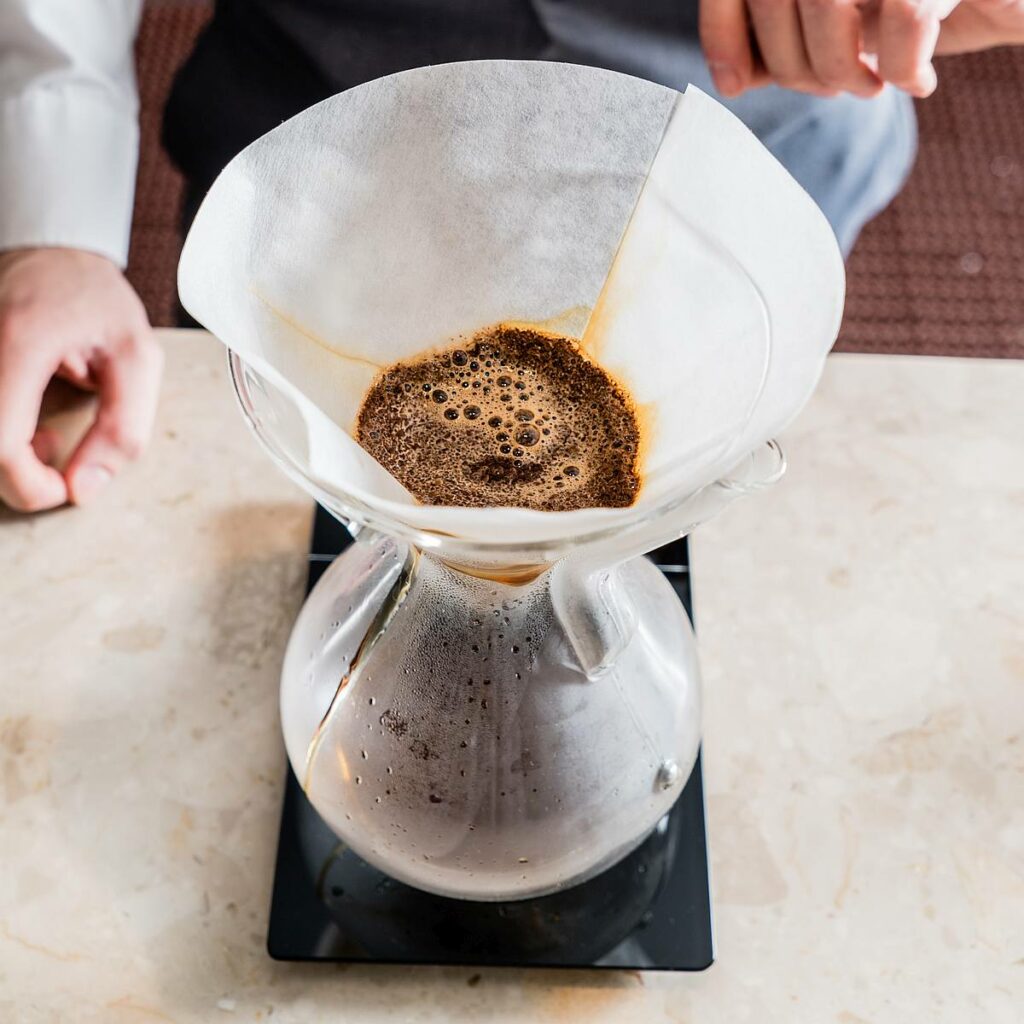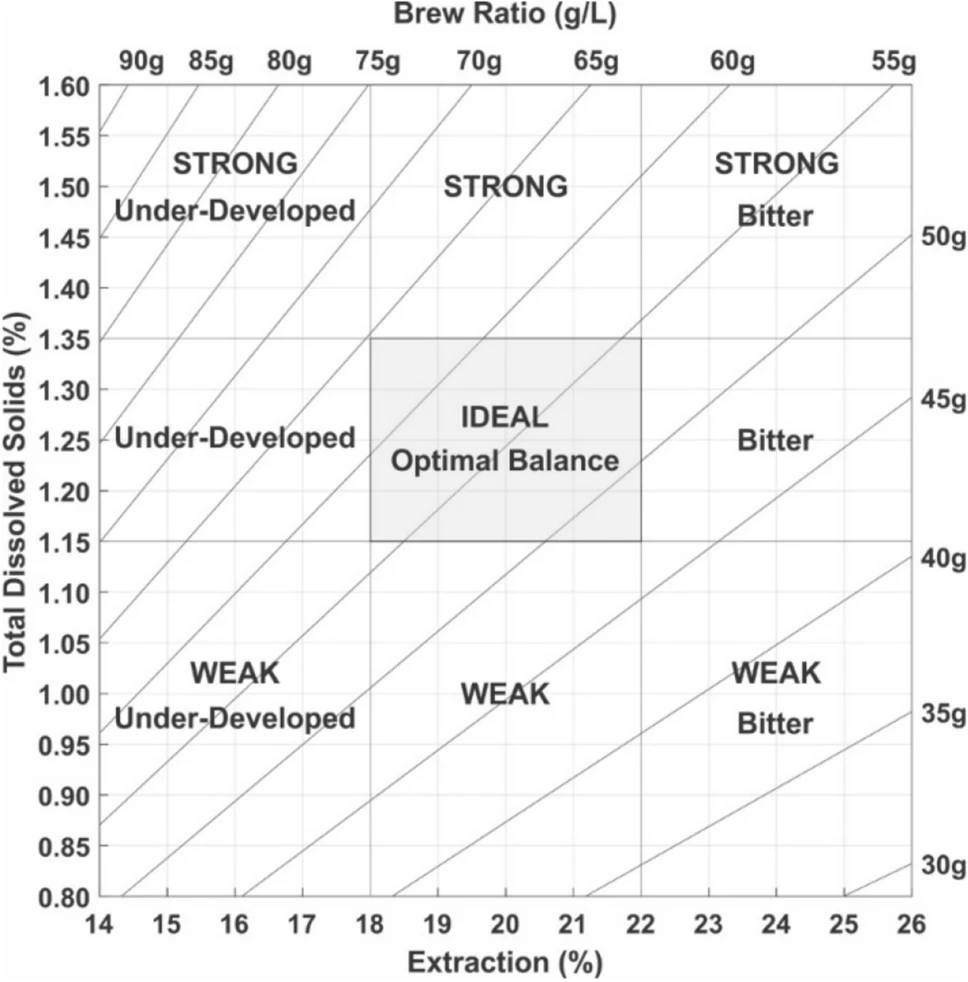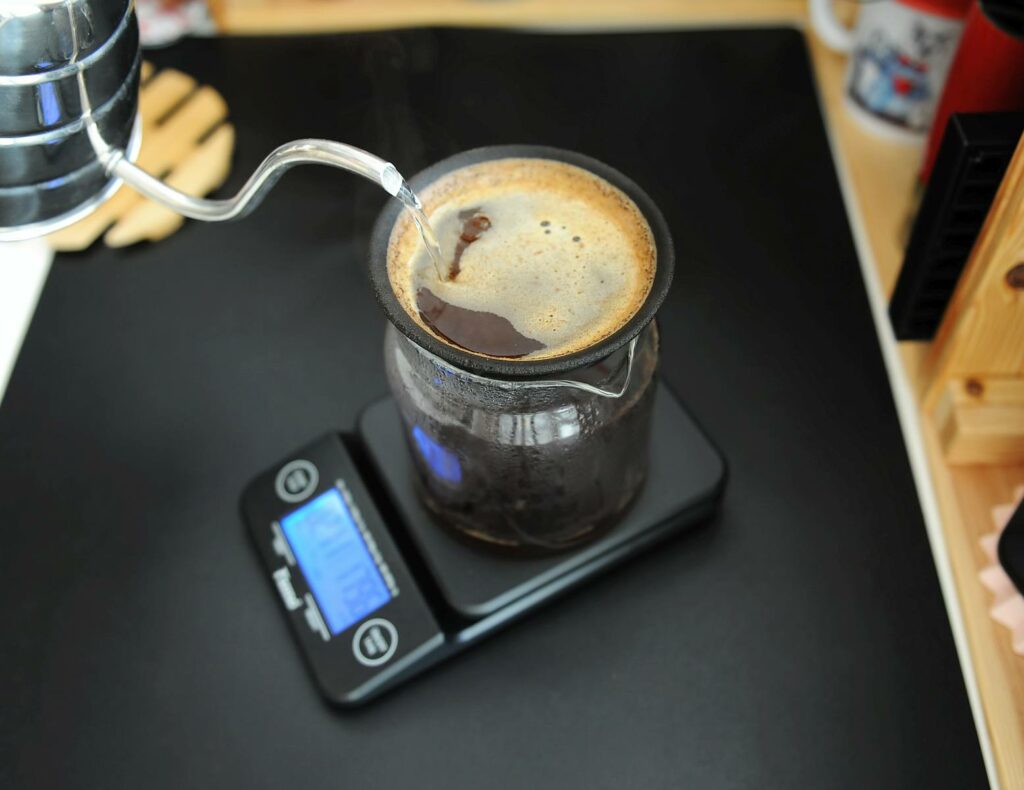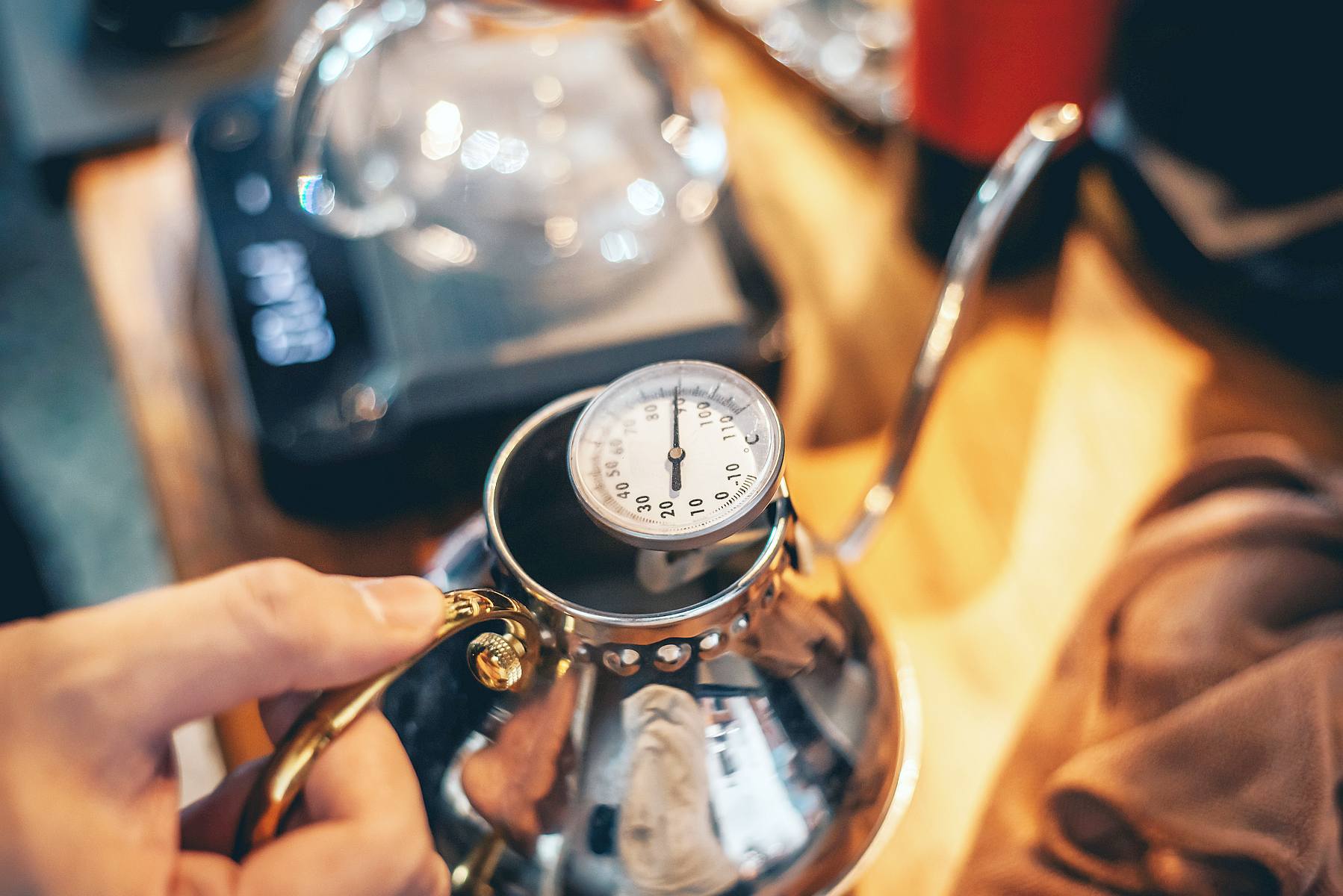Getting the best flavor out of your beans requires more than just pouring hot water over them. You need to get your temperature right. Too hot and you scald the coffee grounds, too cold and your coffee will be too weak.
In this article we are going to show you what is the best temperature for brewing coffee, and when you need to adjust the brew temperature.
A Bit of History
Drip coffee has been a go-to brewing method since the early 1900s. Melitta Bentz, a German housewife, is credited with inventing the first paper coffee filter in 1908 which revolutionized home coffee making by producing cleaner and more efficient results.
Fast forward to 1954 when Bunn-O-Matic Corporation unveiled what’s now known as the world’s first automatic drip coffee maker. This popular technique remains an all-time favorite for many households across the globe today.
Back in the day, coffee was a commodity, and the taste was less relevant, as long as coffee was properly filtered and it contained the much needed caffeine to move society in the right direction.

What Is the Brewing Temperature for Drip Coffee?
The brewing temperature for drip coffee is between 195 °F and 205 °F, or 90.6 °C to 96.1 °C.
This temperature range is only valid within a set of other variables, and altering this set of variables will require adjusting the brew temperature. These other variables are: grind size, coffee grounds quantity, paper filter type, roast level, and coffee variety.
Why Is The Brewing Temperature Important?
Brewing the perfect cup of coffee is all about temperature. You want to reach an optimal temp range for perfect flavor extraction.
If the water is too hot, you’ll extract bitter compounds that make your cup taste bitter, and tannic. On the other hand, if it’s too cold, you’ll end up with a weak and unsatisfying cup of coffee that tastes sour.
Furthermore, you need to consider consistency when brewing the coffee so the water temperature remains stable during the brewing; otherwise, some parts of the brew will be over-extracted while others remain underdeveloped.
Drip coffee brewing entails many subtle elements that make a huge difference to the outcome, with the most important ones: brew time and brewing temperature. While brew time is directly dependent on the grind size, the brew temperature is a function of the coffee machine, so it’s important to own a great one.
There is an interesting article that shows that brew temperature has a lower impact that previously believed. However, in a set of strictly controlled variables, the temperature needs to be constant. This makes it easy to manufacture coffee equipment and to test this equipment.
But let’s understand the science behind the brew temperature.
The Science Behind the Perfect Brewing Temperature
When hot water passes over ground beans, it extracts flavor and oils alongside caffeine. All these compounds are soluble in water. The hotter the water is, the more soluble these compounds are. So much so that if we use boiling water, we scald the coffee grounds, and we extract too much stuff from the beans. Some of this stuff is bitter and tannic, and will make you coffee unpalatable. This is over-extracted coffee.

As we said, the hotter the water the more soluble solids we extract. But the reverse is true as well. The colder the brew water the less soluble mater we extract, and we only extract certain compounds. Coffee prepared with water that is not hot enough, will be lacking in sugars, chlorogenic acid, and phytonutrients.
The amazing thing about coffee extraction is that the various compounds have different solubility in water. That means that by tweaking the two main variables in drip coffee brewing, brewing time and brewing temperature, we can tweak the composition of our final cup of coffee.
Roughly, the order of the extraction is this:
- acids and fats
- sugars
- plant fibers
You must find that sweet spot for an ideal balance between flavors and bitterness. Coffee will always be bitter. Two of the main desirable compounds in coffee, caffeine and chlorogenic acid, are bitter. So inherently, coffee will have some bitterness. But when we use water that is too hot, we start to extract bitter flavors. The bitter taste will overwhelm the delicate flavors, and we’ll have really bad cup.
For optimal extraction, when you aim for a full-bodied cup with none of that unpleasant aftertaste – the perfect temperature is between 195°F and 205°F (90.6°C to 96.1 °C). This ideal temperature should be paired with an extraction time of about 4 minutes.
This combination should deliver a cup with an extraction yield of 18% to 22%, which qualifies as the perfect cup.
The maximum extraction for the coffee bean is 28 to 30%. This means that the total amount of solubles we can extract from the coffee grounds is 28%.
But from a taste perspective, an extraction yield above 22% gives you an over-extracted coffee, that is overly bitter.
An extraction yield under 18% provides a cup which is under-extracted, weak and with a sour taste.
Let’s recap: Colder water results in a weak flavor profile with a sour taste, while hotter temperatures can lead to an overly bitter brew.
Achieving the perfect temperature allows you to selectively extract desirable compounds, unlocking pleasant flavors, and extracting the vital energy from within by releasing the much needed caffeine.
What Factors Affect Brewing Temperature?
The 195°F to 205°F range that was established by SCA, is not meant to confuse you. First of all, the range should give you a decent cup of coffee regardless of other variables. But we have to admit that a cup brewed at 195°F doesn’t taste the same as one brewed at 205°F. Personal preference is key here, but not only that. Certain variables can also influence the selected coffee brewing temperature for drip.
Note that any coffee brewing variable you change, might require you to tweak other variables too, because they are strictly dependent on each other. Even SCA, who created protocols and best practices for coffee brewing, admits that brew temperature is more flexible than their standards.

But let’s explore these variables, and how do they affect temperature.
Grind Size
The 200°F brewing temperature is optimal only for a medium grind size. If we choose a finer grind size, we can lower the brew temperature. Note that this is not feasible, because a finer grind size will slow down the flow too much.
This is not possible with an automatic drip coffee maker, but a manual dripper we can tweak all variables. Grinding finer and choosing a lower brew temperature will produce a milder tasting cup and sweeter.
In the end, you have to remember that drip coffee grind size does indeed affect the brewing temperature.
Roast Level
The roast level plays an essential role in brewing drip coffee since it affects the temperature needed. Lighter roasts require a lower temperature, while a darker roasts need more heat. This is due to changes in chemical composition caused by varying roasting levels.
The more we roast the coffee beans the more the cell structure breaks down, and the beans become more soluble. For dark roasts, slightly colder water works perfectly. For very light roasts you might need to use hotter water in order to adjust the extraction.
Brew Time
Brew time is relatively important, but typically, baristas don’t ploy with it, because it’s hard to control when brewing filter coffee. The longer we brew, the more we extract from coffee. So in theory, if we lower the temperature, we can extend the brew time to compensate.
In practice, brew time is fixed, and we adjust our grind size and pick our filters to finish the pour in about 5 minutes. As you get more experience, and you know exactly what you are looking for in your cup, you should experiment with tweaking brew time, grind size and temperature.
Altitude
The altitude of where you’re brewing the coffee affects the process. The boiling point of water lowers with altitude. For instance, water boiling point in Denver is 203°F, (95°C). In Denver you can use boiling water for your drip coffee. For manual brewing that is simple because you can adjust the brew temperature easily. However, with an automatic drip coffee maker the process is a bit more complicated.
Coffee Bean Type
The type of coffee bean you use also determines what temperature you should use during the brewing stage. For example, Arabica and Robusta are two main varieties requiring different heat levels. Arabica has more subtle flavors that may be lost when brewed too hot; thus, these beans should generally be heated to lower temps.
On the other hand, Robusta’s bold flavor is robust enough to withstand higher temperatures for optimal extraction.
Coffee varietals also need different temperatures in order to be extracted properly. Great quality coffees, grown at higher altitude, have a denser bean, which extract slower than a a coffee grown at low altitudes.
The Amount of Coffee Used
I explained how the bed of coffee creates a flow resistance, just enough for the grounds to be in contact with the water for the 3-5 minutes. When you use too little coffee in the coffee bed, water passes through very fast, and there is not enough contact time to dissolve the soluble solids.
This is why you can’t brew less coffee in an 8 cup coffee maker.
Other Variables
Other variables can influence the brew temperature
Finally, certain flavors are more volatile than other flavors, and if we want to preserve those flavors in our final cup, a lower temperature might be better. Typically, these temperatures are found by trial and error. It takes patience and a scientific approach to find the perfect temperatures for a high quality bean.
Tips for Brewing Drip Coffee at the Perfect Temperature
Creating the perfect cup of drip coffee involves selecting the right equipment and your chosen brewing technique. Therefore, consider these tips to help you enhance your brewing techniques:

1. Temperature Control Gear
If you decide to invest in a contemporary coffee maker, choose one with a temperature control option that can be adjusted to stay within the optimal range.
2. Preheating Essentials
Always preheat your equipment, such as the carafe, filter, and machine itself, to ensure that the temperature remains stable throughout the brewing process. It’s important to remember that cold surfaces will also cause water temperatures to dip too low, resulting in a weak brew.
A cold coffee mug is not that important to be preheated, if anything, your beverage will be cooled off faster, so you don’t burn your tongue, or desensitize your taste buds.
However, if you use a cold ceramic cone, That will absorb a lot of the heat. So much that your brew temperature will drop dramatically.
3. Measuring Temperature Accurately
If you don’t have access to temperature-controlled gear, use a digital thermometer to measure the temperature during brewing. This way, you can determine if it’s within range (195°F–205°F).
As we mentioned elsewhere in this article, a variable temperature kettle is the best. But if you want to use a regular kettle, you need to have a way to estimate the water temperature, or use a kitchen thermometer.
5. Altitude Adjustment
You’ll need to slightly raise the brew temperature when utilizing high-altitude beans in your blend, as require more force to extract the flavor of the coffee.
6. Experimentation Is Key
Try experimenting with different temperatures until finding one that provides the desired balance of aromas and flavors.
In Summary
Drip coffee brewing has been around since the early 1900s. Drip coffee is easy to make and yields a smooth-tasting brew. But the significance of selecting the optimal coffee brewing temperature is paramount when it comes to creating a perfect cup.
A number of factors contribute to deciding on the optimal temperature: type of beans, roast level, and altitude where they were harvested all influence your choice for heat setting up for optimum flavor profile.
To ensure optimal results every time, buy a brewer with a solid temperature control, or pair your manual dripper with a variable temperature kettle.
Finally, don’t be afraid to experiment with different temperatures until you find one that brings out the best flavors for a quality cup of drip-coffee.
